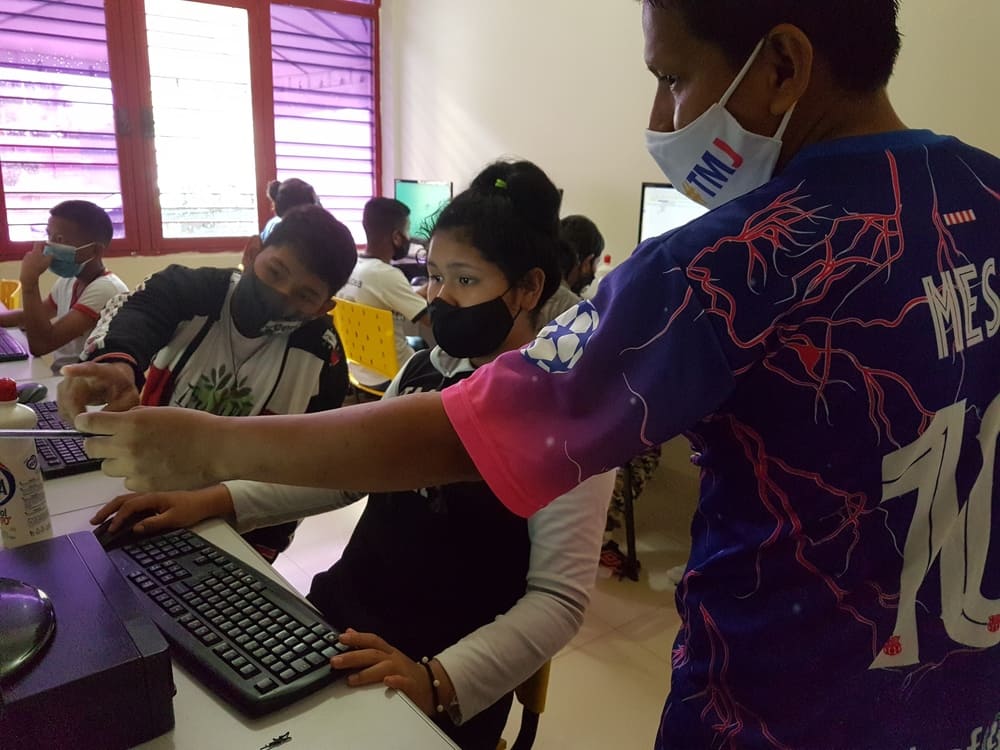“A child should not work. Childhood is for dreaming.”
2021 was declared by the UN to be the International Year for the Elimination of Child Labor. Under the leadership of the International Labor Organization (ILO), the international community has increased their efforts to eliminate child labor in all its forms.

The subject is so relevant to the ILO, that in 2002, this organization established June 12 as the World Day Against Child Labour, striving to raise awareness in society, workers, employers and governments around the world to the exploitation of children and adolescents. That year, the global report on child labor was presented at the International Labor Conference, and from that point on, every year a theme is proposed for a campaign of awareness and the mobilization of society. In Brazil, the date was established in 2007.
Estimates of the ILO indicate that there are 152 million children subject to child labor in the world, 73 million of which are in dangerous work. Of the total of the young labor force, 70% works in agriculture, mainly due to poverty and the difficulties of parents in finding work with decent remuneration.
In Brazil, in the last twenty years, progress was made in the policies for combating child labor, but there are still 2.7 million children and adolescents, between 5 and 17 years old, exploited as laborers in very diverse sectors of the country, 59% being boys and 41% being girls. The majority is in the Southeastern region (854,000) and the Northeastern region (852,000), followed by the regions of the South (432,000), North (311,000) and Central Western (223,000).
The Humanitarian Fraternity (FIHF) encourages the autonomy of the refugee population.
The subject is complex for society as a whole, because of the common belief that work during childhood has educational value. It is even more sensitive when it is about indigenous children and adolescents who are refugees – such as the Venezuelan indigenous people that live in the five shelters under the management of the Fraternity – International Humanitarian Federation (FIHF), in the State of Roraima.
In those shelters, there are specific activities for eliminating child and adolescent labor, which include a group of activities encouraging play, creativity and learning, indirectly contributing to curbing child labor. There are also activities developed that make it possible to train young people and adults in professions for their inclusion in the labor market.
Through the Livelihoods Sector, the Humanitarian Fraternity (FIHF) has been active in the building of Lasting Solutions, creating strategies to encourage means of subsistence and more autonomy for the refugees who live in the shelters. There are vocational courses offered, of longer or shorter duration, such as cutting and sewing, IT, baking, and work safety, among others.
The more prepared and familiar with the language, the easier it is for the refugees to enter into the labor market. This has diminished situations that before were very common on the streets of Boa Vista: indigenous women and children begging – which they call ‘gathering.’
There is still a lot to do!

Among the different activities, the highlight is the Art Education projects, with ongoing processes and practices for children, youths and adults, creating safe learning environments in informal educational practices and recreational activities, promoting participation, inclusion and creativity.
Some examples of those projects are developed in the shelters with adolescents and youths, starting at 13 years old. The coordinator of the Art-Education Sector, Sister Maria de Lourdes, a monk of the Grace Mercy Order, tells us that: “the activities are focused on the four axes of education: music, sports, art-education and agroecology. The activities aim to offer a safe and trustworthy space, where values of peace and fellowship are cultivated, avoiding situations of exploitation.”
Sister Maria de Lourdes lists the activities carried out: “In the area of art-education, we offer classes of dance and body expression, design and painting. In the area of music: classes of violin, singing activities, musical games and rhythms. In Agroecology: care of the agroecological spaces in the Pintolândia Shelter, and in the Indigenous Cultural and Training Center, where there are activities for the preparation of beds for cultivating medicinal plants, watering plants, managing banana tree plantings, caring for the compost, in addition to recreational activities. The sports activities, such as volleyball, football and other games are developed in partnership with the representatives of the shelter communities.”










